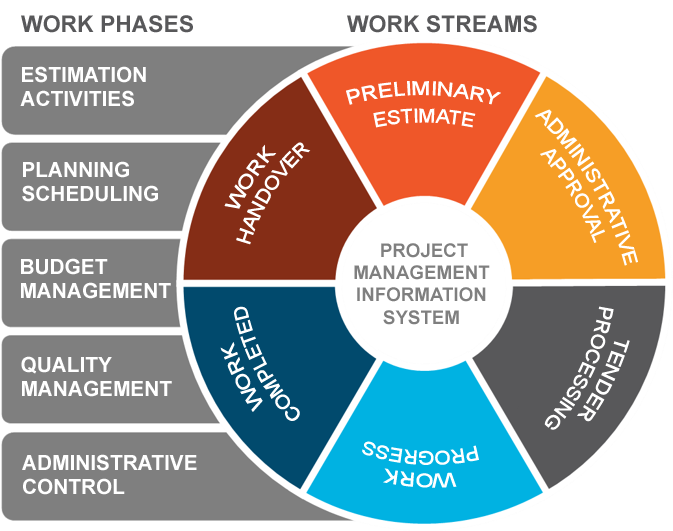Get your projects on track, use PMIS today


Projects contain a great quantity of information, documents and data. Every project manager has the same challenge of finding the right tools and techniques to deal with all of this knowledge. Without the right software to organise all the project information, projects can go off track — so having a project management information system (PMIS) comes in handy. This software programme or application organises and controls the flow of project data and information. The system helps project managers plan, execute, monitor and achieve desired goals more efficiently, without getting overwhelmed with data. The scope, design and features of the software can be customised depending on an organization’s operational requirements. Our PMIS is a typically designed web application and a methodical process for collecting, compiling and using project information to measure progress, analyze profit & losses and ensure completion of project on time.
Major Features
Let’s take a closer look at how a PMIS works in project management. It aligns with the project manager’s needs and helps complete the specific project phase requirements. The phases include project initiation, planning, execution, review and closure stage. At its core, PMIS is built to assist in successful project management.
- Multi-Information Dashboard
- Information Management
- Project Planning & Scheduling
- Budget & Estimating
- Resource Management
- Vendor Management
- Cost Management & Project Performance
- Progress Reporting
- Payment Management
- Data & System Integration
- Readily available: It is fully customized and open source-based project monitoring tool
- End-to-end Solution: It helps the users to monitor end-to-end construction related projects and also can generate various reports at any point of time.
- Compatible to all platforms: It is accessible & compatible to all devices.
Key Benefits
Having a project management information system can give you a leg up while managing a project. As you zip through successive project stages, you need a project management information system that evolves and suits your needs for each phase. Here are some of the advantages of implementing the PMIS.
1. Keeps the project on track
By tracking costs, budgets, and work schedules, PMIS can help you avoid costly project slippages. Instant notifications and work tracking keeps the project on its scheduled timeline.
The PMIS also acts as a discrepancy tracker. The system tracks project progress and send you notifications immediately if anything does not go to plan. With quick updates from the PMIS, the team can instantly make any required adjustments, reassign resources, and implement new processes.
Once the corrective actions are underway, teams can monitor them to confirm their efficacy. The PMIS’ rapid tracking system acts as an effective competitive edge for companies, helping them manage projects within the budget and scheduled timeline.
2. Fosters better collaboration and teamwork
Imagine one team member is still using Version 1 of a document when Version 2 has already been circulated to the entire team. Think of all the hours, energy, and effort that are being wasted. Apart from adversely affecting individual productivity, the project would lose a day or two due to the team veering off course. Plug this leakage by having a PMIS that lets you control, share, and update documentation in real-time with your team members.
3. Gives a competitive advantage
Data is at the core of any project management information system. Data-driven organizations are 20 times more likely to gain new customers, leading to a higher profitability than the companies / organisations that don’t make data-driven decisions. A PMIS is a significant contributor to project management success, boosting the capabilities of organizations against their counterparts.
4. Enables higher-quality decision making
Making a decision ultimately boils down to having the correct information. With a PMIS solution, teams have access to real-time data to get the ball rolling. From detailed project processes to product testing results to the hours worked by the team, key decision-makers have access to everything they may need. Having a holistic overview of the project and its granular data can assist in making decisions that would be beneficial for the team. Apart from giving your project a strong competitive advantage, it can improve organizational performance and help achieve project goals.
5. Manage diverse projects at the same time
In many organisations, there are often multiple projects going on at the same time. Managing them can be a challenge if you don’t have the right tools. In multi-project management, a PMIS would allow the key stakeholders clear visibility into each project, its work schedule, and resource management. Whether a project is ongoing, completed, or in the planning stages, project management information systems can help manage multiple projects simultaneously.
Target Sectors
- Public Enterprises who are into construction & consultancy activities
- Companies & factories for commissioning of new plants & projects
- Engineering departments of Government like PWD, RD, Irrigation, PHE etc.
- Commercial builders, developers & contractors
- Project based Corporate /PSUs like OSIC, OCCL etc
